PV*SOL premium
PV*SOL premium is the professional software for 3D design and simulation of photovoltaic systems – including precise shading analysis. For more than 25 years, engineers, planners, and installers worldwide have relied on this industry standard to optimally design PV systems, reliably calculate yields, and create bankable reports. Whether for residential homes or commercial rooftops, for full or surplus feed-in, or in combination with battery storage, electric vehicles, and heat pumps – PV*SOL premium models every system configuration realistically and flexibly.
The unique 3D visualization is the highlight of PV*SOL premium. You can visualize all common types of systems in 3D, whether roof-integrated or roof-mounted, whether on small angled roofs, large industrial halls or open spaces - with up to 7,500 mounted modules or up to 10,000 roof-parallel modules - and calculate the shading based on 3D objects. With the realistic shading from surrounding objects, you can achieve the highest reliability for your yield forecast.
All other design types from PV*SOL are of course also available in PV*SOL premium. Whether calculating self-consumption, designing battery storage or integrating electric vehicles - with PV*SOL premium you can implement all customer wishes in no time at all.
Our extensive product database includes over 26,000 PV modules, 7,500 inverters, 5,500 battery systems and many other products such as electric vehicles and performance optimizers. It is updated regularly by the product manufacturers themselves, so you can always work with the latest data.
You can generate high-quality project reports for your customers that can be edited as required. Circuit diagrams with the necessary safety devices can also be created, e.g. for submission to the relevant authorities.
The current feed-in tariffs are available in our database for the calculation of economic efficiency. By adding the information to the system costs, you will receive a detailed economic analysis of the system over 20 years. This allows you to create an initial offer in just a few minutes.
PV*SOL premium is available in German 🇩🇪, English 🇬🇧, Spanish 🇪🇸, French 🇫🇷, Italian 🇮🇹, Polish 🇵🇱, Czech 🇨🇿, Portuguese 🇵🇹 and Turkish 🇹🇷. And with project reports available in 24 languages, language barriers are a thing of the past.
Our technical support team and our help pages offer you assistance with your questions. In our forum you can address more complex questions to our team and other PV*SOL premium users.
Would you like to try out whether PV*SOL premium fits your design process? Download the free trial version now!
Product highlights
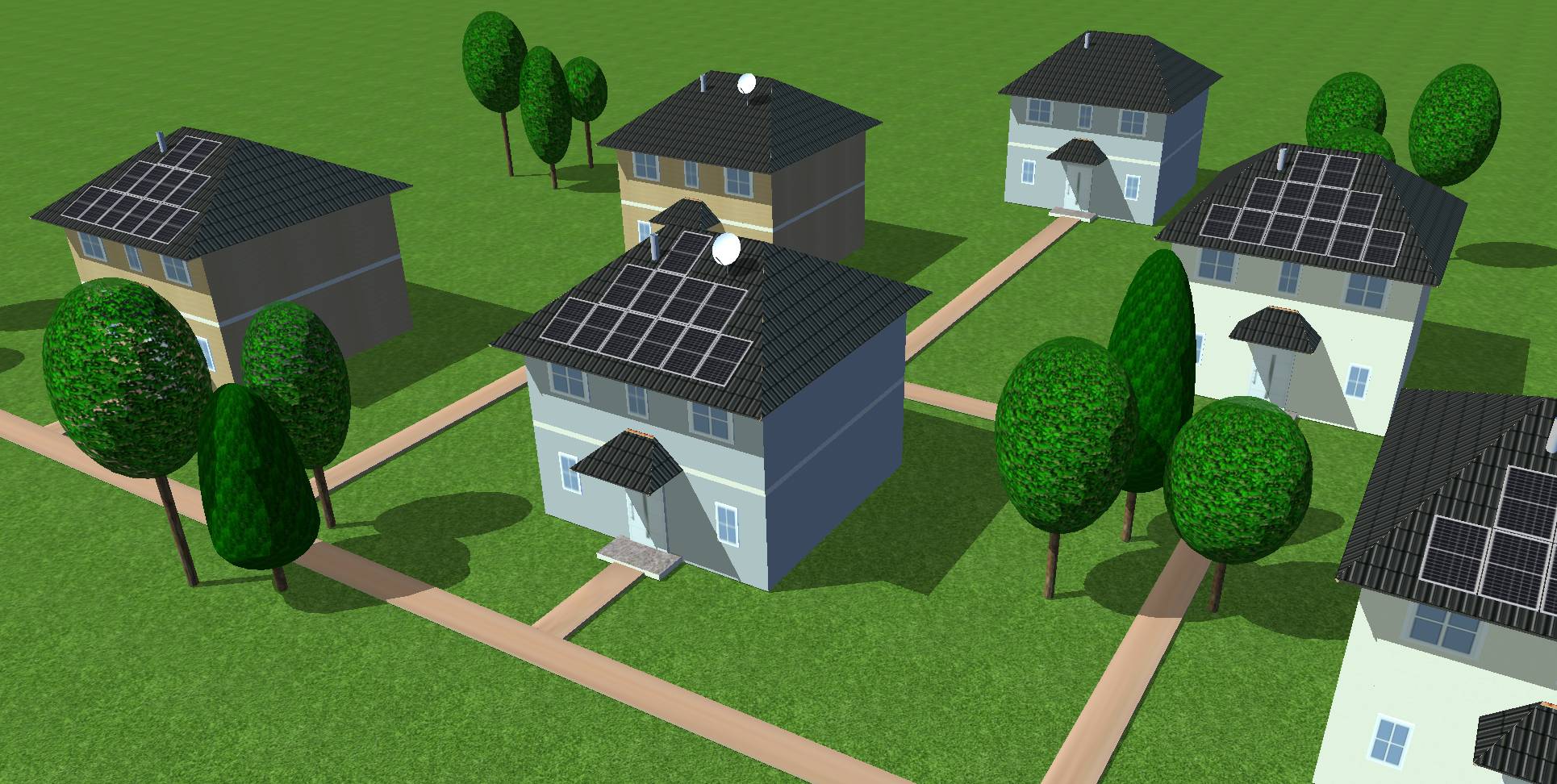
Detailed 3D shading analysis
A three-dimensional representation of surrounding objects is extremely important for determining the reduction in yield due to shading. With PV*SOL premium, you can visualize all roof-integrated and mounted systems - even in open spaces - with up to 7,500 mounted modules or up to 10,000 roof-parallel modules in 3D and calculate the shading based on 3D objects.
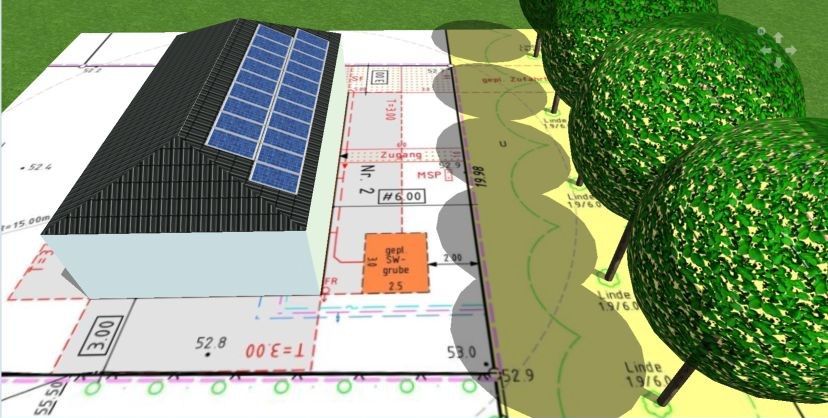
Extrude buildings in 3D
Buildings and objects can be created quickly and easily using floor plans, cadastral maps and map screenshots. First the contours are traced, then the building can be extruded by entering the height (any type of building with a pitched or flat roof). From PV*SOL premium 2024, high-resolution orthophotos and elevation data are available via the Google Solar API. This makes the PV design in 3D even faster and more accurate.
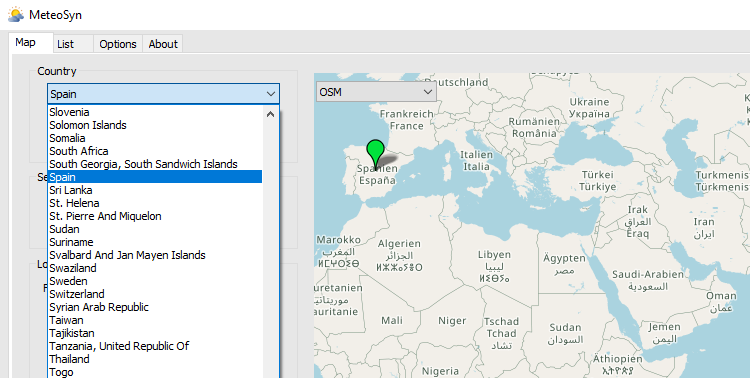
Global climate data available
PV*SOL premium provides you with high-quality TMY data sets for every km² in Germany (own procedure based on DWD data) and for any location worldwide with Meteonorm 9 (data period 2001-2020). In addition, PVGIS, Solcast and SolarAnywhere are available as providers. You can use the interactive map to conveniently select the climate data. Own measurement data can be imported via files in DWD, Meteonorm or WBV format.
More program details
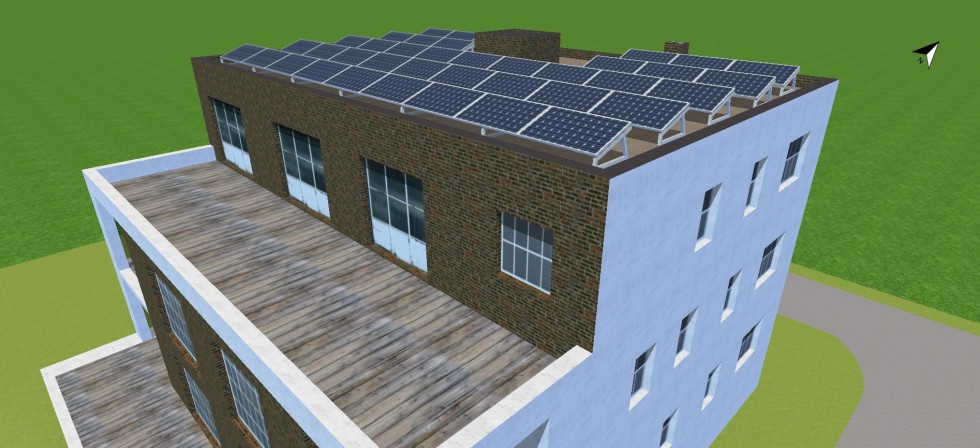
Import of 3D models
3D models of different file formats can be imported to enter object data. This adds another important tool to the existing option of reading floor plans, cadastral maps and screenshots from web-based satellite maps (e.g. Google Earth) directly into the 3D visualization.
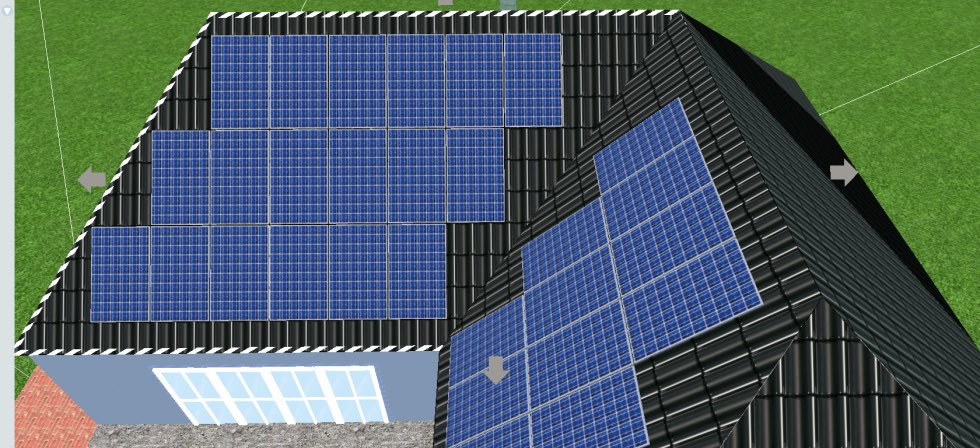
Module assignment in 3D view
The roof areas are covered with the maximum possible number of modules automatically, or manually by tracing the areas to be covered by PV. If required, PV*SOL premium can show you the annual radiation reduction (direct and diffuse radiation) for every point of the PV area and for each module. Thanks to an interface to the planning tool K2 Base from mounting system manufacturer K2 Systems, systems no longer have to be planned twice.
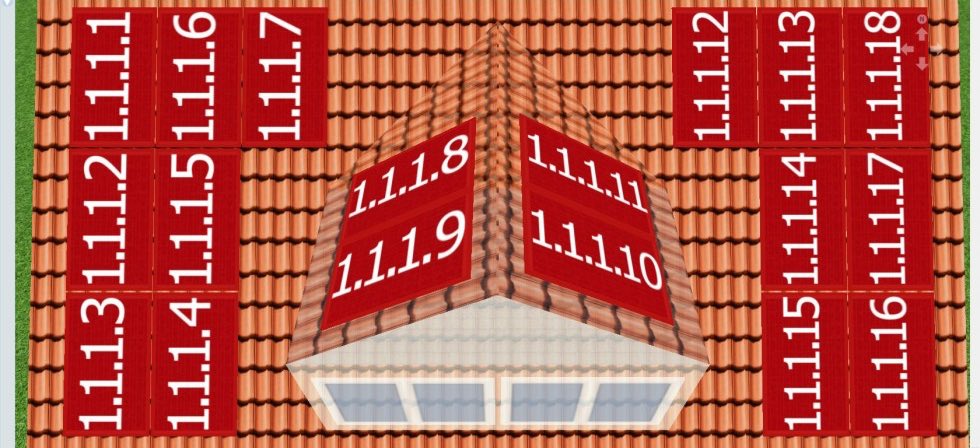
Polymorphic interconnection in combination with optimizers
Flexibility has been significantly increased when interconnecting the modules that are automatically placed on an object. The new option of polystring interconnection means that completely different strings can be connected in parallel or in series to an MPP tracker. Even different modules in one string, e.g. defective modules that are no longer available, can be replaced with similar ones.
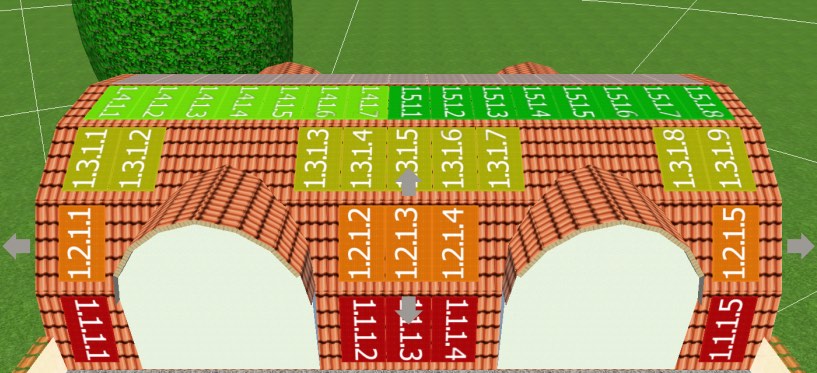
Optimization of the module interconnection
You decide whether you want to connect several module areas to one inverter or choose a separate inverter for each module area, or combine both. The current status of the system check is displayed in the configuration window at all times. The automatic interconnection has been fundamentally improved; in addition, interconnections can be suggested for SolarEdge products.

Current online databases
In our extensive product databases you can currently find data records of over 30,000 PV modules, 8,500 inverters, 12,500 battery systems and many other products such as electric vehicles and performance optimizers, which are updated by the manufacturers. With our online databases, you can easily make your own products available to others.

Detailed project report
Create comprehensive project reports with simulation results and technical details in 24 languages and export them as Word or PDF documents. You can add your company logo to the report and specify which content should be displayed. A visually appealing customer presentation for quotations and customer consultations is also available.

Grid-connected systems with battery storage
Design your own battery storage system by selecting the batteries and defining the battery inverter and charging strategy. Alternatively, you can load battery systems from leading manufacturers. Thermal systems can also be flexibly connected to both AC- and DC-coupled battery storage systems.

Electric vehicles
Select one or more electric vehicles that are simulated in combination with the photovoltaic system. By entering the daily mileage and the downtimes, PV*SOL calculates how much PV energy can be used to charge the electric vehicles.

Summary of results
The detailed results overview contains representations of the simulation results, the results of cost-effectiveness and a detailed tabular energy balance with all the gains and losses that occur. Carpetplots immediately provide you with an annual overview of individual results.

Circuit diagram
PV*SOL supports your system design with a freely configurable circuit diagram. Both the string cable losses and the AC and DC cable losses per inverter can be determined. Numerous safety devices such as fuses, switch disconnectors and surge protection can be easily added.
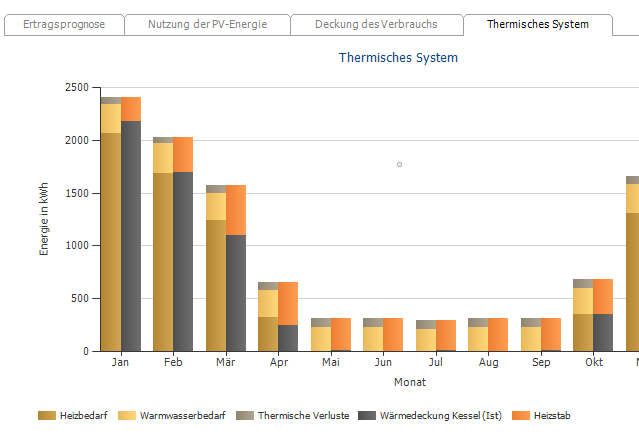
Thermal System
Use your solar energy to support the boiler in the thermal system as heating supply using a heating rod or a simplified model of a air-water heatpump.

Other features
Choose which models you want to use for diffuse radiation and radiation on the inclined surface. The U-I and U-P characteristics for each time step can be produced when required. Exchange your user ID to share self-created products within your company.
Licensing and pricing
Contact
If you have any questions or need advice, call us on +49 (0) 30 588 439 0 or write an e-mail to sales@valentin-software.com.
We are happy to help you.
PV*SOL premium
Named user license (1 year)
Dynamic simulation program including 3D visualization and detailed shading analysis for photovoltaic systems with appliances, battery systems and electric vehicles.
845,00 EUR
plus VAT
System requirements and release notes
System requirements
- Internet connection
- Processor: Intel i3, AMD Ryzen 3 or higher
- RAM: 4 GB
- Hard disk space: 2 GB
- Resolution display: at least 1.280 x 768 pixels
- Operating system: Windows 10 (64 bit, latest service pack required), Windows 11 (64 bit)
- Graphics: DirectX compatible (at least Version 9.0c), 2 GB, OpenGL
- Others: Microsoft .Net Framework 4.8
You can download our free trial version and test whether PV*SOL premium can be run on your computer!
Release Notes
The following new features and changes are included:
- New system type: “Grid-connected PV system with electrical appliances, thermal systems and battery systems”.
- Multiple from-grid tariffs can now be selected and freely assigned to different consumers.
- New compact project report with the most important simulation results.
- New load profiles for air conditioning systems, working from home and retiree households.
- Updated climate data based on Meteonorm 9 (2001–2020).
- All result graphics can be added to the project report.
- Project reports are now also available in Lithuanian.
- Project data and results can be exported to a JSON file.
- 3D:
- Acceleration of shading simulation and shadow frequency calculation.
- The OpenStreetMap provider has been removed from the map tool.
- The profitability calculation dialog has been redesigned.
- When importing consumer load profiles with a leap year, the correct number of values is now also output.
- For time-controlled charging and discharging of battery systems, time periods extending beyond midnight can now also be entered.
- When exporting the results to a CSV file, the formatting of the exported numbers has been standardized and is now without scientific notation.
- With the introduction of the thermal systems plus battery system, it is no longer possible to select the “PV-optimized” heat pump operating mode.
- Diagrams of the characteristic curves can no longer be added to the project report because this would make the project file too large.
- It is currently not possible to generate climate data from your own monthly values.
- The combination of time-controlled charging and DC generator-coupled battery systems is now prevented.
- The license management client has been updated (improved stability).
The following bugs have been fixed:
- 3D:
- Some plans that were no longer valid were not deleted.
- In some cases, existing 3D models were duplicated when reopening the 3D visualization. Removing the duplicates caused a crash.
- Crashes when loading projects with a large number of extruded objects.
- Crashes when extruding polygons.
- Incorrect shadow after importing and moving or rotating objects.
- Some texts in the options dialog were not displayed correctly.
- Artifacts when displaying the shade frequency distribution.
- When opening the 3D visualization, the message “Silhouettes have been corrected” was displayed multiple times.
- In the economic efficiency results, one year was missing from the cash flow table if the assessment period was longer than the remuneration period including solar peak compensation.
- In some cases, the payback period was given as more than 100 years if it exceeded the observation period.
- When opening the options dialog, the time step of the simulation was sometimes changed.
- In some cases, the simulation (yield reduction due to shading) did not start if settings in the options were changed after a simulation was aborted.
- Balance error in the simulation of time-controlled charging and DC-coupled battery systems.
- In some cases, the simulation results were not displayed correctly after loading a project with solar peak compensation.
- In some cases, it was no longer possible to load project files after updating the online database.
- In some cases, the open-circuit voltage was too high after loading the project report several times.
- Incorrect translations.
The following new features and changes are included:
- Revised calculation of direct own use of PV energy for DC intermediate circuit-coupled battery systems with time-controlled charging from the grid.
- When planning with a DC intermediate circuit-coupled battery system with time-controlled charging and the energy at the inverter input is less than the charge of the DC storage, the Sankey diagram is no longer displayed in the results. This can occur if the DC storage is also charged from the grid.
The following bugs have been fixed:
- Crash when opening the Results page if a project from the previous version is loaded in which the simulation results were saved.
- Error in the display of data series from thermal systems when exporting to a *.csv file.
The following new features and changes are included:
- Calculation of annual cash flow in combination with taxes and loans revised.
- If a loan is used in the financial analysis, the results now also include the “Accrued Cash Flow (Cash Balance) minus pending loans” diagram.
- The “Energy cost trend” diagram can now be selected or deselected for the project report.
- The climate data from PVGIS has been updated to SARAH3.
The following bugs have been fixed:
- Financial Analysis:
- In some cases, a heat pump was included in the calculation of savings, even though the system type did not include a heat pump.
- In some cases, the charging of the electric car from the battery was not taken into account in the calculation of savings.
- Error when loading the already simulated feed-in tariff in the first year when using DC battery systems and the Solar Peak Act calculation.
- Off-grid systems:
- Error when opening project files.
- When the simulation is aborted, only a simple message is displayed instead of the crash window.
The following new features and changes are included:
- In the simulation with a thermal system, the maximum value for hot water consumption was increased to 1,000,000 kWh.
The following bugs have been fixed:
- 3D:
- Partial crash when opening the 3D visualization if the Mounting surfaces of the 3D models were generated automatically.
- Partial crash when opening the 3D visualization if the counting method of the module assignment in the project was incorrect.
- Message before crash if imported 3D models cannot be loaded.
- Financial analysis:
- Date in the last block of the cashflow table if no EEG tariff is used and the observation period is shorter than the remuneration period.
- Incorrect calculation of the annual cash flow if the tax option was used.
- Circuit diagram:
- Circuit diagram was sometimes not displayed correctly when 3D planning was used.
- Crash when creating the circuit diagram.
- Crash if no investment costs and tariffs have been defined in the financial analysis.
- Crash on the inverter window if the power optimizer field was clicked first and then the inverter model field immediately afterwards.
- Problems when entering degrees, minutes and seconds of coordinates in the map tool search.
The following new features and changes are included:
- In the circuit diagram, the DC intermediate-coupled battery systems are now drawn on the DC side of hybrid inverters.
- 3D map tool: Direct access to search provider Bing Maps removed.
- MeteoSyn: In case of errors during the import of climate data, the possible error is now indicated.
The following bugs have been fixed:
- 3D:
- Error when loading projects with exactly 7 modules on top of each other in a mounting system.
- Partially floating modules when using Google Solar API and 3D models at the same time.
- Partially incorrect display of half-cell modules.
- Photo Plan:
- Help could not be accessed with F1.
- Missing translation when selecting roof tiles.
- Diagram PV energy during observation period did not show the correct observation period for projects located outside Germany.
- Partial problems with the diagrams for the economic calculation.
- User profiles: The tooltips were “hard coded”.
- The parameters "Year", "Month" and "Day" sometimes described a DateTime that could not be displayed.
- Automatic configuration search sometimes did not deliver any results for the SMA Tripower Core 2.
- In the project report, the minimum system operation period was not displayed if 100% loan capital was used.
- Partial error in the cumulative cash flow if a loan was defined.
- Error in the calculation of the last block in the cash flow table.
- The power specification of the backup generator was incorrect in the circuit diagram.
The following new features and changes are included:
- Interface to the software PV Configurator of the underconstruction manufacturer Renusol (Interface will be activated in the Renusol PV Configurator on 30.04.2025):
- In the 3D planning, projects can be exported from PV*SOL premium to the Renusol PV Configurator.
- The mounting systems and layout can then be planned in the PV Configurator and exported back to PV*SOL premium.
- PV*SOL premium adopts the layout, the mounting system and the parts list from the Renusol PV Configurator.
- Display of the amortization period is no longer limited to the observation period.
- Photo Plan: Re-implementation of Braas roof tiles, Velux roof windows and measuring tools.
- Improvement of the translation.
The following bugs have been fixed:
- 3D:
- Manually entering the coordinates of a corner point for drawn polygons sometimes led to the position of other corner points also being changed.
- When reloading a project, the number of automatically generated surfaces of a 3D model no longer matched the number when saved the project.
- Error in the login dialog of the license management:
- Login dialog did not respond.
- Login dialog did not display any content.
- Economic calculation:
- Fix for unsaved hourly values of grid feed-in if hourly values were not saved in the project.
- The diagram of the Development of Energy costs sometimes showed a peak in the last year of the observation period.
- Partial crashes of the minute value synthesis at Brazilian locations.
The following new features and changes are included:
- German “Solarspitzengesetz” (Solar Peak act) can now be mapped in the economic efficiency.
- Revised cash flow table:
- Year 1 is now a full year.
- The last year may only be part of a year.
- The period of each year shown is listed.
The following bugs have been fixed:
- Charging the e-vehicle from the battery system was not shown in the coverage of total consumption diagram.
- Licence management issue with error 401.
- Energy flow diagram:
- Display of energy flows from battery to electric car corrected.
- Error in balancing when using heating element.
- Error when saving the project files if characteristic curves should also be saved.
- Crash in the assignment of DC charge controller and inverter connections when using more than 10 DC battery systems.
- Crash in the characteristic curves if there was no PV yield in individual months.
The following new features and changes are included:
- New offline database.
The following bugs have been fixed:
- 3D projects with special characters in the names of the module areas could not be saved.
- Error in the simulation of multiple module areas if no radiation hits one of the module areas.
- Crash in the simulation if the inverter characteristic curve only showed a value of over 0 % at a utilization rate of 10 %.
The following new features and changes are included:
- 3D:
- In the options, an additional distance can now be defined for the overview picture.
- Options button now also available in the screenshot manager.
- Import of 3D models from Blender files removed.
- Buttons for copying results tables and diagrams.
- Copy & Paste in the parts list now only copies the selected cells.
- Specific CO2 emissions are set to 380 g/kWh.
- Currents and voltages are now grouped during CSV export.
- Guernsey and Jersey added to MeteoSyn country list.
The following bugs have been fixed:
- 3D:
- Partial crashes when using *.jpg files as map sections.
- Terrain model was sometimes rotated against orthophoto.
- Problems with main button bar.
- Partial crashes when creating the texture of PV modules (e.g. AIKO from 625W).
- Imported 3D models on a map section could not be rotated together with the map.
- Display of shadows after rotating map section with 3D model and modules.
- Partial crashes when saving when using K2 import.
- Incorrect positioning of modules when using K2 import.
- Overlay with height information is no longer removed when saving.
- Height suggestion for superstructures corrected for some cases.
- Crash when extruding superstructures that are close to the edge of the Google Solar API data.
- Problems when saving the terrain model.
- Partially incorrect alignment of the arrows for changing the object areas.
- Button for drawing of mounting surfaces active, although of no use for Google Solar API import.
- Google Solar API - Extrude pitched roof with texture.
- Extrude - Clicking the texture checkbox no longer resets any entries.
- Extrude - With pitched roofs, a map texture is no longer unintentionally displayed when the roof edge is selected.
- When using imported 3D models and the terrain model of the Google Solar API, modules could float in the air.
- Error when averaging 10- and 15-minute values in *.csv export.
- Crash when starting different PV*SOL variants and versions at the same time.
- Crash when exiting the financial analysis parameter dialog if the term and repayment free initial period year were set to the same value.
- Crash when simulating with bifacial modules and row spacing 0 m.
- Opening the options for *.csv export did not force a new simulation when changing the time step.
- Simulation progress dialog could no longer be closed with "Alt+F4".
- Error in checking the charging power for electric vehicles.
- Carpet plots in the project report are now prevented if simulation results are not available.
- Rare crash in calculation of DC power of DC-coupled battery systems.
- In some cases, the initialization file for the license management could not be deserialized.
- Error when using tracker systems for locations in the southern hemisphere.
- Display of the PV modules page in French, Spanish, Portuguese and Italian partially incorrect.
- Changing the country of the climate data led to the deletion of the financial analysis data for off-grid systems.
- The energy balance entries for power optimizers were not correctly labelled during *.csv export.
- Crash when defining a new PV module if the current or voltage in the MPP was higher than the short-circuit current or open-circuit voltage.
- Incorrect interpolation of power optimizer curves between negative and positive power consumption.
- Crash when starting PV*SOL due to IPC timing problem.
- When using battery systems with batteries based on lithium nickel manganese oxide, negative losses could occur in the battery.
- Main window no longer disappears into the background when MeteoSyn is called up.
- Simulation of time-controlled charging for DC-coupled battery systems was not possible.
- Error in the system check with Huawei optimizers.
The following new features and changes are included:
- Up-to-date offline database.
The following bugs have been fixed:
- 3D: In some cases the main button bar was not displayed correctly.
- New license management:
- Crash when starting PV*SOL (UUID not available on some computers).
- Crash if the license file could not be written.
The following new features and changes are included:
- New license model user-based licenses. More information:
https://valentin-software.com/en/support/faq-new-license-model/
- A Sankey diagram is now available for the energy balance.
- Different user/company data can now be stored in the options.
- For *.csv export, you can now specify which data series should be exported.
- “NREL Meteosat” is now available as a new data source for creating your own climate data records.
- Climate data in *.epw (EnergyPlus Weather) file format can now be imported.
- The search in the map tool has been improved.
- The “Cumulative Total Energy Generation” diagram can be included in the project report.
- Validation of PV modules improved.
- The entry in the field “Project Designer” is adopted for newly created projects.
- The entry of the email address in the crash and database user ID window is adopted for all email entry fields.
The following bugs have been fixed:
- Crashes during simulation.
- Improved simulation of battery systems with time-controlled charging and feed-in regulation.
- Error when applying the degradation for all module surfaces.
- Error in the calculation of the degradation for the GEG.
- If no inverter configuration was found, a corresponding message was no longer displayed.
- Crashes in the search field of the map tool.
Contact
![]()
Sales
For product inquiries or questions regarding your order, quote, or invoice, please get in touch with our sales team. You can place your order either by e-mail or via our shop.
E-mail: sales@valentin-software.com
Telephone: +49 (0)30 588 439 0
Office hours:
Mon – Thu, 9:00 – 16:00 hrs
Fri, 9:00 – 13:00 hrs
![]()
Technical support
Do you have any questions about installation, registration, project-related topics, or our online databases? Our technical support team is here to help:
E-mail: hotline@valentin-software.com
Telephone: +49 (0)30 588 439 0
Office hours:
Mon – Thu, 9:00 – 12:00 hrs and 13:00 – 15:00 hrs
Fri, 9:00 – 12:00 hrs
Visit our Forum and our PV*SOL help pages


